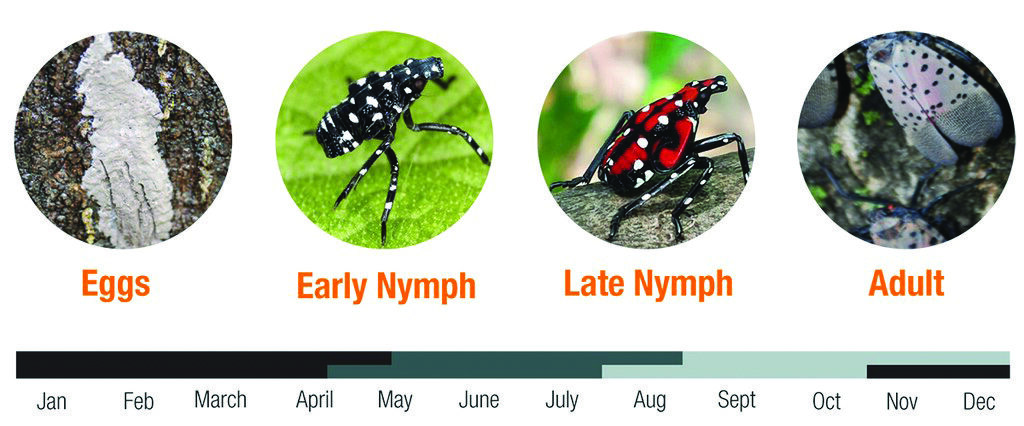
Invasive species found in Oakland County
By Don Rush
Out of all the counties in the lower part of the Mitten State, only in Oakland has the invasive species Spotted Lanternfly been found. Now Michigan officials want area residents to be on the lookout for the insect.
According to the state’s Invasive Species Communications Coordinator Joanne Foreman, the Michigan Department of Agriculture and Rural Development confirmed the presence of Spotted Lanternfly in early August 2022, after receiving a report from a worker at a plant nursery on a small parcel of county-owned land at the crossroads of Martin Luther King Jr. Blvd. and Featherstone St. in Pontiac.
“To date, the infestation has been contained to this property. The Michigan Department of Agriculture and Rural Development and partners are continuing to conduct surveys in the area and urge those in the neighborhood to report any suspected sightings of the insect or its egg masses,” Forman said.
She said the Spotted Lanternfly is an invasive plant hopper native to eastern Asia. First found in the United States in 2014 in southeastern Pennsylvania, the Spotted Lanternfly has spread rapidly through the eastern states. Confirmed observations of the insect have since been recorded in Connecticut, Delaware, Indiana, Maryland, Massachusetts, New York, North Carolina, Ohio, Pennsylvania, Rhode Island, Virginia, and West Virginia.
Spotted Lanternflies feed on a wide range of fruit, ornamental, and woody trees, with tree-of-heaven being one of the preferred hosts.
According to the state’s invasive species website, Spotted Lanternflies have the potential to affect over 70 plant species in Michigan. Plants at risk include some species of hardwood trees and important agricultural crops like grapes, apples and hops. Spotted Lanternflies suck sap from host plants and secrete large amounts of a sugar-rich, sticky liquid called honeydew. This sugary honeydew supports the growth of a black fungus known as sooty mold. In large amounts, honeydew and sooty mold can kill plants, foul outdoor surfaces like decks, siding and cars and can attract hornets, wasps and ants.
“It prefers to feed on the invasive tree-of-heaven, but will also feed on a wide range of plants including grapes, and other trees such as black walnut, river birch, willow, sumac and red maple,” Foreman said.
Foreman said Spotted Lanternflies can be spread long distances by people who move infested material or items containing egg masses. “Anyone travelling from an infested area should take precautions to avoid spreading spotted lanternfly to new areas. Check vehicles, trailers, gear and anything that’s been outside for Spotted Lanternfly or its egg masses before getting on the road and again when you reach your destination,” Forman said.
If you see a Spotted Lanternfly, she said to contact the state.
Identifying the insect isn’t exactly easy.
“They have multiple life stages beginning with egg masses, which look like chewing gum or putty and can be found on trees, buildings, vehicles or anything left outside,” She said. “These tend to blend in with tree bark, making them a bit difficult to see. They first emerge as a small, quarter-inch to half-inch black, beetle-like nymph with white spots, then morph to a red nymph with white spots.
Many people have seen images of the colorful underwings and body of the adult Spotted Lanternfly, but they are actually rarely poised with their wings open. They are more likely to be seen with their wings closed, on a tree trunk or branch, and will appear as a one inch, gray-winged insect with black spots.”
She said the state is launching a program this summer called “See it, Squish it, Report it!”
“Right now, Spotted Lanternflies are just beginning to hatch across the Eastern U.S., so people should be looking for egg masses or nymph stages. Adult stages occur from July to November. If you see a suspected spotted lanternfly, squish it and take photos, then make a report through the ‘Eyes in the Field’ online reporting system. Photos are needed to verify any reports,” she said.
The Eyes in the Field website is www2.dnr.state.mi.us/ors/Home.

Leave a Reply